Whilst California has become the 'Left Coast' sliding into the abyss of 'progressive' politics, we should not forget its Catholic roots going back to the Spanish.
From One Peter Five
By Charles Coulombe, KCSS, STM
Above: Father Serra Celebrates Mass at Monterey; painting by Léon Trousset, 1877.
Having come back to California after years abroad, I must admit that the tarnish on the Golden State is exceedingly visible. I was born in New York City, New York, but lived most of my life around Los Angeles. It has not escaped me that my native states and cities have respectively the two stupidest governors and mayors in the Glorious Union. The homeless problem in LA has ballooned in my absence, while inflation and corporate flight are wreaking horror on the economy in all of California. A great many of my friends have fled.
But for all that, I want to look at some of the things that will still attract the outsider – and especially the Catholic outsider – to visit. I do not know if I shall ever live there permanently again, but there are places to which I’ll want to return – and which, in the August of this waning summer, I wish to share with you.
Christendom in California
The Golden State’s natural settings remain as remarkable as ever: our national parks, national forests, Federal public lands, state parks, state forests, and county and city parks remain – for the most part – as inviting as ever. Death Valley, the High Sierras, Lake Tahoe, Big Sur, the high deserts – the list goes on and on. There are few landscapes that cannot be found within California’s borders, and it is against these astonishing backdrops that the State’s history has been acted out.
Needless to say, California’s Indian tribes were extremely diverse – not least because it was not an easy place to make a living. Smaller, broken tribes, pushed out of lusher places, made up California’s pre-Columbian population. Their standard of living was rather low; for the most part their existence depended upon acorns and rabbits – although coastal tribes supplemented this with shellfish and fish.
The arrival of St. Junípero Serra and the Spanish in 1769 changed this picture considerably. With additional meats, vegetables, and grain, the standard of living of the Mission Indians rose considerably. By 1821, twenty missions were founded, in a mostly coastal chain from San Diego to San Rafael, with a 21st being founded under Mexican rule at Sonoma two years later. Two cities were founded – Los Angeles and San Jose – and four presidios or forts at San Diego, Santa Barbara, Monterey, and San Francisco. Around this bare structure were scores of ranchos, whose denizens raised cattle, practiced their Catholic Faith, visited each other, and celebrated an endless number of fandangos per year. Such was the Spanish California of song and story.

The Coming of the Anglos
When Mexico detached California from Spain, the new rulers eventually secularised the missions. This resulted in the scattering of their Indian populations and a number of other unpleasantries. Yankee settlers in time would launch the 1846 Bear Flag Revolt, by which the American invasion forces brought California into the United States. The Gold Rush of 1849 brought in settlers from all over the country and the world, and in 1850, California became a State of the Union. San Francisco became a real city, complete with opera and theatre; such amenities would also adorn many of the mining towns of the High Sierras that rose up quickly out of nothing – and often sank back as quickly into the soil.
After the Civil War and the opening of the railroads, more immigrants rushed in. Among these were a great many writers and artists. The romance of Spanish California gave birth to such tales as Zorro and Ramona. The missions were restored, and the beauty of both built and natural landscape gave birth to a native school of painting – California Plein Aire.
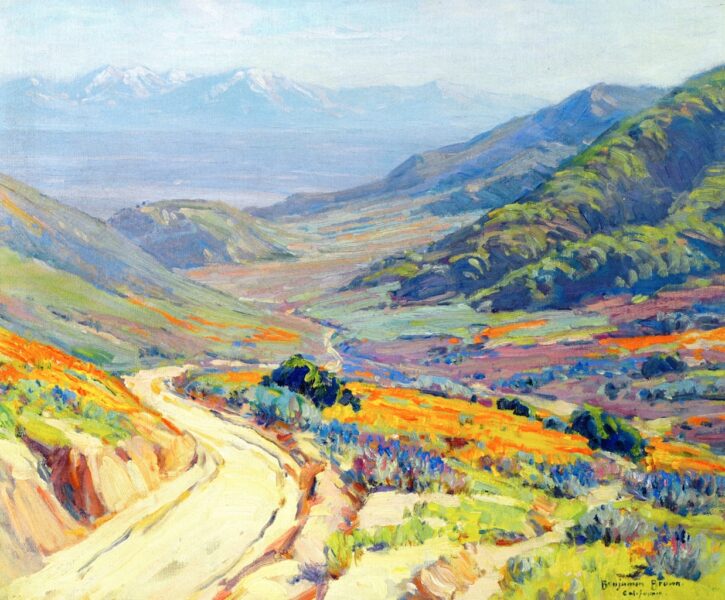
Examples of it abound, but one of the best examples is the Picture Bridge, at Pasadena’s Langham Huntington Hotel.
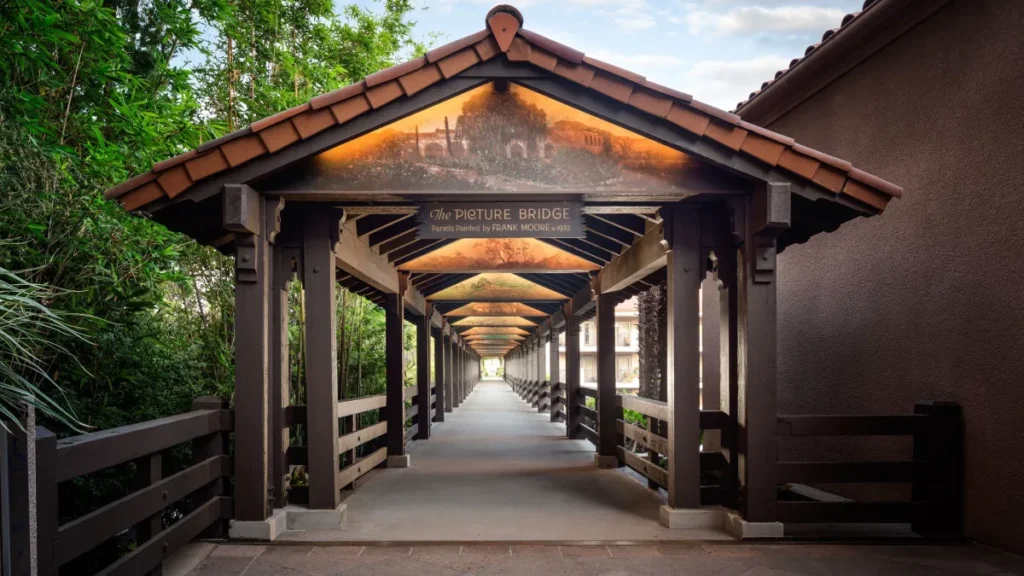
Artists flocked to towns like Carmel, La Jolla, and Pasadena’s Arroyo Seco. Remnants of the latter’s turn of the century artisans’ colony are the Lummis House, Judson Stained Glass Studios, Rancho San Encino’s Press, and the Batchelder Tile Company. The American version of the Arts and Crafts movement produced a local architectural variant, the California Bungalow, while even such a mundane product as packing for the region’s citrus fruits gave birth to a unique art form. Cheap land and weakened denominational ties also began California’s reign – especially in the Southern half – as a refuge for “alternative” spiritualities.
Catholic Hollywood
After World War I, this latter became a much bigger element of the State’s life, in concert with the rise of the film industry. The Golden Age of Hollywood drew ever more immigrants; a stream of Midwestern visionaries came out to the Golden State, including the founder of Forest Lawn Cemeteries, Dr. Hubert Eaton; Ronald Reagan; the parents of writer Ray Bradbury; and Walt Disney. These and thousands of lesser-known folk transformed the State yet again – especially the Los Angeles area, where the 1920s and 30s saw scores of neighbourhoods thrown up seemingly overnight. The Catholic Church sought, as she had since the coming of American rule, to keep up with these expanding numbers by opening up ever more parishes, schools and hospitals. Thanks to the Hayes Code and the Legion of Decency, she was able to contribute a beneficial if ultimately fleeting influence over the film industry. Of course, this was combined with the influence of Catholic actors, directors, and producers.
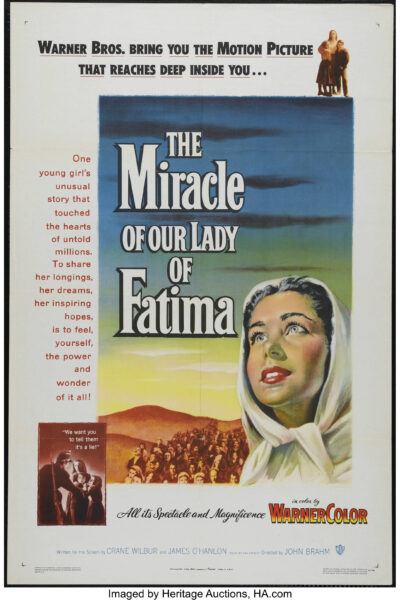
California Gets Weird
World War II ushered in a great many changes to California. Apart from the great Battle of Los Angeles, when – depending upon whom you speak to – the city held off either space aliens, Japanese, or self-delusion, the State was unaffected directly by the combat raging across the globe. But thousands of Americans from out of State passed through – many resolved to return, whenever the war should end. The opening of wartime aerospace and other industries expanded the financial base and provided thousands of job opportunities for the returnees. These in turn required housing, and the great California suburban housing boom arose to accommodate them. To the Theosophical, Lemurian, and other odd religiosities were added UFO cults of various sorts, in keeping with the wonders of the atomic age. Disneyland opened in 1955 and symbolised in many ways the inner yearning of its creator and his public.
But the Age of Eisenhower made way for the Age of Aquarius. This was when my family and I arrived in Los Angeles from New York. The whole Hippie subculture, ranging from Los Angeles to San Francisco’s Haight-Ashbury, would usher in changes to the State’s culture that became – during the 1970s – institutionalised across the country and the world. My family’s immediate experience of this was the explosion of the Carl Rogers-deluded IHM Sisters in 1968. However, the election of Ronald Reagan as Governor in 1966 had shown that there were more conservative forces at work as well. Still – although he would bitterly regret it later – it was Ronnie who legalized abortion in our State, two years before Roe v. Wade.

In many ways, California has been a bellwether for the rest of America; if New England is where the United States are from, the Golden State is where they are headed. If that holds true, expect a leadership further and ever further removed from reality, chairing a mob who follow their leaders into madness. It is a bleak picture, to be sure.
But in the meantime, there is yet much to be seen. If you wish to visit the Golden State, you can still see some wonderful remnants of the history I have described here. The best way to experience it is to use the Spanish Royal Road – El Camino Real – from San Diego to Sonoma as the spine of your visit, so to speak. In addition to Mission San Diego, you can see the Junípero Serra Museum, the complex of attractions in Balboa Park, the San Diego Zoo, Old Town, and two 19th century hotels – the U.S. Grant, downtown, with its famed Mock Turtle Soup, and the mysterious Hotel Del Coronado on the island of the same name.
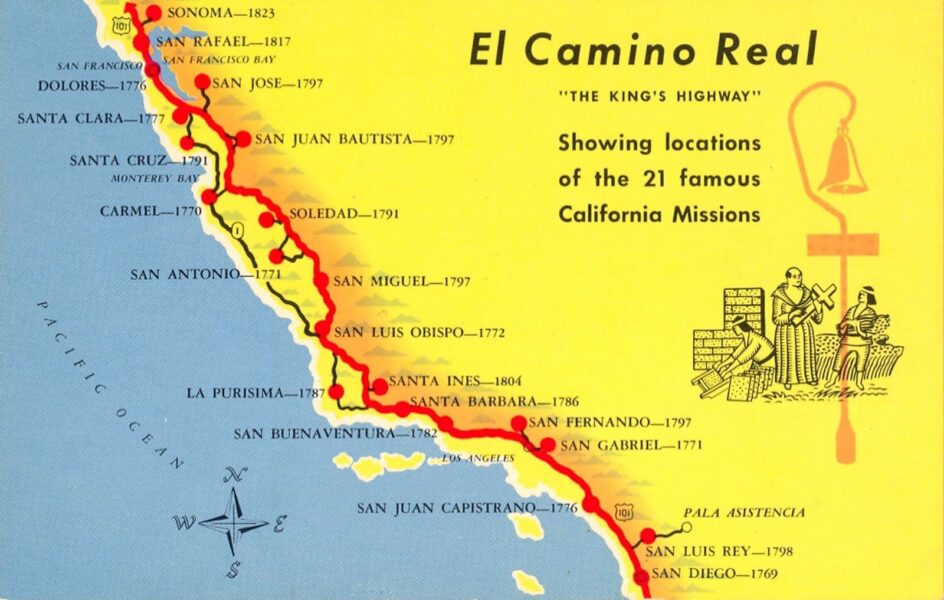
Driving north along the coast, you’ll come to Oceanside with Mission San Luis Rey and Prince of Peace Abbey. Continuing in the same direction will bring you to San Juan Capistrano with its eponymous Mission, and an old shopping and dining district. Driving through Orange County, you’ll arrive at Disneyland and Knott’s Berry Farm. If you can tear yourself away from these, a northern jaunt into the San Gabriel Valley past the Pico Adobe will bring you to Mission San Gabriel, where the first settlers from Mexico rested in August of 1781, before pushing on to found Los Angeles in September of that year.
Remaining in the centre of the City of Angels from that time are the Plaza Church and what is now El Pueblo de Los Angeles Park, wherein the great metropolis was born. Nearby are City Hall, the exceedingly beautiful Central Library, the former Cathedral of St. Vibiana, the horrendous current Cathedral, Little Tokyo, and Chinatown.
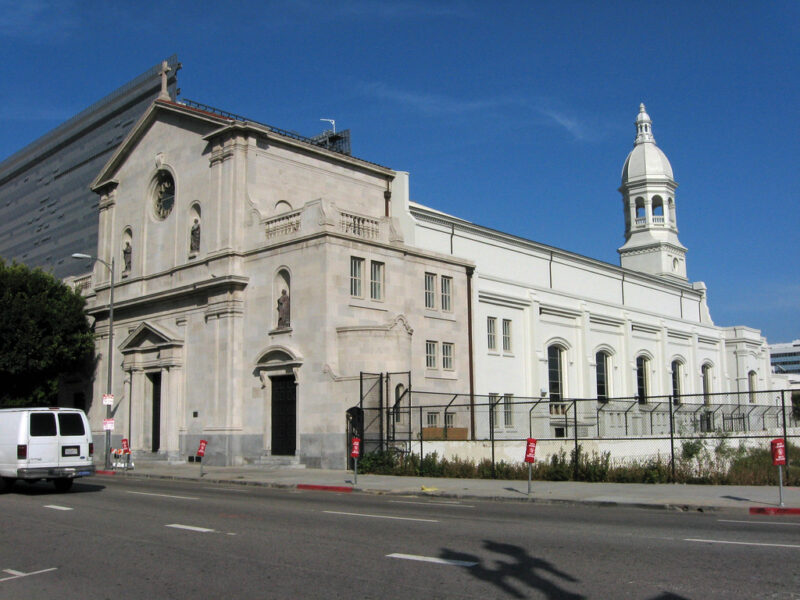
Northwest of Downtown Los Angeles is the area called Hollywood. Once glamorous, then a slum, it is now a Disneyfied version of itself. But you can still find traces of its Golden Age at Grauman’s Chinese Theatre, the Roosevelt Hotel, Musso and Frank’s Grill, Miceli’s Restaurant, and the Pantages and El Capitan Theatres. If you really want more glamour from that era, make a run down to Long Beach and the RMS Queen Mary. In any case, pass on into the San Fernando Valley; you can stop at the Campo de Cahuenga and Universal Studios en route – the one for history, the other for, well, still more film. San Fernando Mission in the northwest edge of the Valley gives its name to the whole.
The next Mission in the chain is at the town of Ventura, but there are several ways of getting there. Go inland, and you can pass through Santa Paula and visit the amazing chapel at Thomas Aquinas College. Pass down through Topanga Canyon to the Sea, and you can hit Malibu, and proceed up the coast. Both roads come together at Mission San Buenaventura. From there you’ll proceed up the coast to the Santa Barbara area.
This well-to-do region boasts such resorts at the Miramar, Rancho San Ysidro, Montecito Inn, and El Encanto. Its mission is spectacular, and it retains its presidio and a charming downtown.
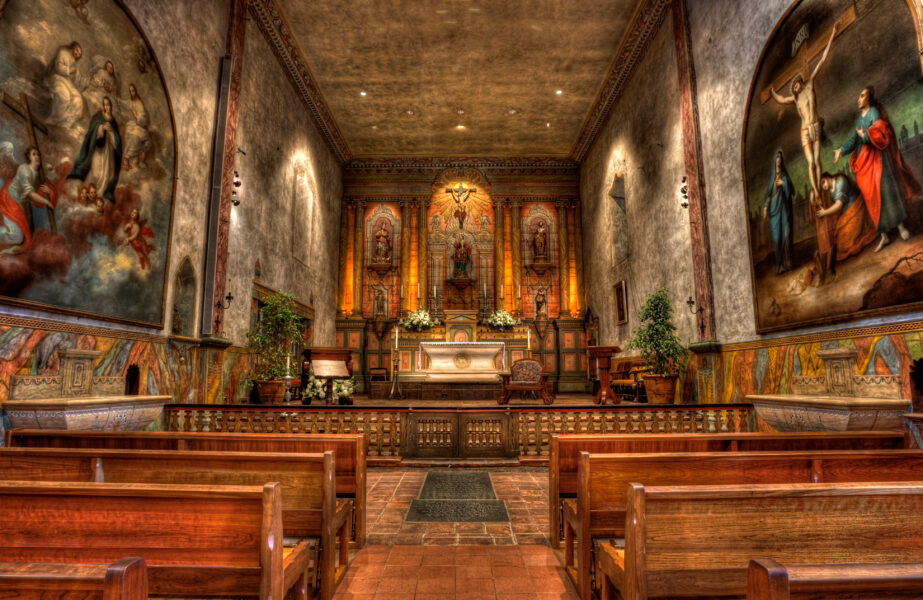
The Art Museum, County Courthouse, Lobero Theatre, and Poor Clare Monastery are all worth a look. Move inland on the road to Solvang, and you’ll pass the Cold Springs Tavern, and ancient stagecoach stop that has always remined me of Tolkien’s Inn at Bree. Soon you’ll come to Mission Santa Ynes, and the afore-mentioned Danish town of Solvang, which is like a little bit of that Scandinavian Kingdom scooped up and dropped down into California. Then comes Lompoc and Mission La Purisima – in State hands but giving a good idea of what all the missions were like in their heyday.
Just past the truly eye-popping Madonna Inn is the town of San Luis Obispo, with its own namesake Mission – alas, the most uglified of them all. Here you must decide if you will take the inland Mission route – via San Miguel, San Antonio de Pala (off the main road in the heart of the Hunter Liggett Military Reservation, near another mission style building that was once a hunting lodge owned by W.R. Hearst), Soledad (the loneliest mission of them all) and then overland via Carmel Valley to Carmel. Otherwise, you’ll take the coast road – Morro Bay with its impressive Morro Rock in the harbour; cute little Cambria; Hearst Castle at San Simeon, and on to the incredible scenery of Big Sur. If you take this route, you’ll know you have arrived at Carmel when you see the lovely Carmelite monastery on a hill high above the roadway.
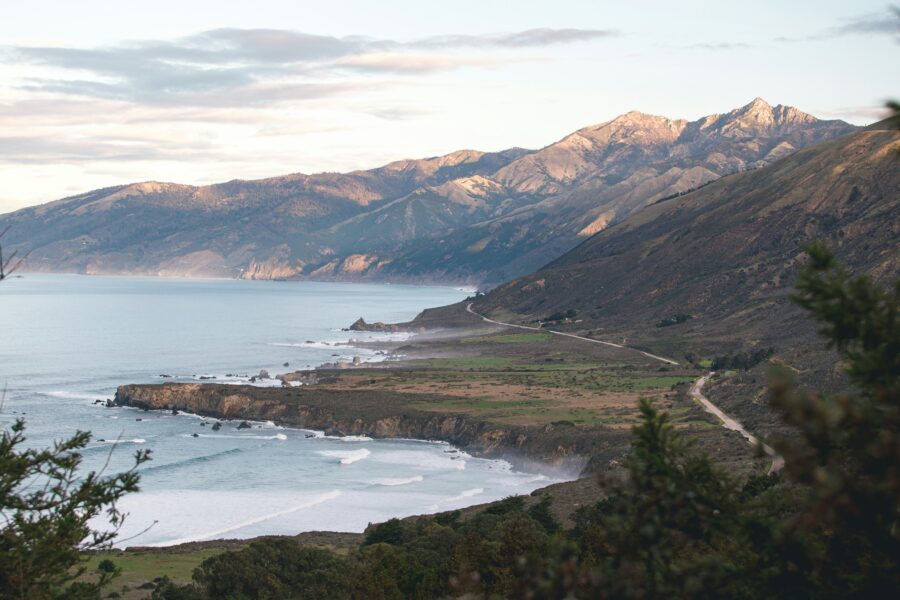
This is your entry into the picturesque Monterey peninsula. Carmel Mission with its shrine of St. Junípero Serra is of course your first stop. You might have breakfast at the Tuck Box, if you love Hobbitish style meals. Carmel too has its art museum and forest theater – and much else besides. The seventeen mile drive connects it with Pacific Grove via extraordinary scenery. PG itself boasts the Monarch Butterfly Refuge; then you come to Monterey with its Spanish-era Royal Presidio Chapel and Customs House, and, of course, Fishermen’s Wharf and Cannery Row.
After a brief jaunt inland to see Mission San Juan Bautista, you’ll hit the coast once more, and take in the college-and-mission town of Santa Cruz. Driving north over the hills, you’ll come at last to the Santa Clara Valley – once a wonderful wine region, now paved over as Silicon Valley. Santa Clara university’s chapel is actually the Mission of that name, while confusingly San Jose’s cathedral of St. Joseph is the first of two parish churches founded under the Spanish (LA’s Plaza Church being the other), and visiting Mission San Jose requires a brief detour to the nearby town of Fremont.
Drive north again, and you shall come to San Francisco. As with Los Angeles and San Diego, there is an awful lot for the Catholic pilgrim to see, even in this would-be self-anointed New Sodom. There are a great many beautiful Catholic churches – as well as an ugly cathedral. But Dolores Mission was the beginning of the city, and the presidio’s officer club dates back to 1776. Golden Gate Park is well worth exploring, and as for dining, this writer recommends John’s Grill, with its memories of Dashiell Hammett and the Maltese Falcon. There is of course much more to see here and in Berkely, a sort of Colonial Williamsburg for the 1960s Counterculture. But we must move on!
Over the storied Golden Gate Bridge is San Rafael, and its mission replica. Driving north, we arrive at Sonoma, whose mission is also a state park, which comprises the Mexican presidio as well. Here is where the Bear Flag revolt was staged. North of the town stretch the Sonoma and Napa Valles, with their vineyards, fine dining, and various Catholic customs. In Napa itself, in recent years, the Napa Institute – a “ministry to Catholic ministries” has become an annual event. It is a true sign of a hopeful future in the midst of all the darkness.
There is of course far more to see in California than the slight itinerary I have attempted to paint for you. But this should whet your appetite – especially if ever you are able to make such a trip. In any case, when one is tempted to simply dismiss California as a Leftist stronghold, remember that there is a lot more here than that – as may be said of anywhere else on this planet of ours, where the Kingdom of God is always cheek by jowl with the Kingdom of Man.

No comments:
Post a Comment
Comments are subject to deletion if they are not germane. I have no problem with a bit of colourful language, but blasphemy or depraved profanity will not be allowed. Attacks on the Catholic Faith will not be tolerated. Comments will be deleted that are republican (Yanks! Note the lower case 'r'!), attacks on the legitimacy of Pope Leo XIV as the Vicar of Christ, the legitimacy of the House of Windsor or of the claims of the Elder Line of the House of France, or attacks on the legitimacy of any of the currently ruling Houses of Europe.